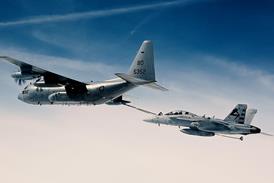A group of major European avionics manufacturers has designed an avionics architecture for future aircraft which will vastly reduce development and support costs and improve interoperability between aircraft and systems.
The Industrial Avionics Working Group (IAWG) has completed a risk-reduction study into software techniques for integrated modular avionics (IMA) which has identified a three-layer architecture: aircraft-dependent/hardware-independent; aircraft- and hardware-independent; and aircraft-independent/hardware dependent, says British Aerospace technical project manager David Field.
The work is part of the Allied Standards Avionics Architecture Council's (ASAAC) Phase I effort towards a standard agreement (which is known as a STANAG) on IMA. ASAAC partners are France, Germany and the UK, while the IAWG includes British Aerospace, GEC-Marconi and Smiths Industries.
IMA requires new approaches to system management and system security, and introduces the concept of system "blueprints", says Field, allowing some software to be shared rather than being permanently allocated to a particular piece of hardware.
Communication is also shared among many processors rather than having a relatively inefficient databus under standards such as Arinc 629 or Mil-Std 1553B, and is passive - each processor has its own private memory.
A domain manager is also present in "all processing sites", says Field, while a "rack manager, logically a single entity" provides an "overall topology", although it is present "on one site at a time".
Airbus is also investigating what Michel Comes, director of systems at the Airbus Large Aircraft division, describes as a "new concept in software - the use of different criticality levels on the same processor".
The team claims to have taken an important step in proving its architecture, showing that the middle-layer software in its design does not depend on the underlying hardware layer. This will allow hardware modules to be replaced "at first-line maintenance", says Field.
Airbus hopes that such an architecture design will allow "total independence", because after a change, the system can be reconfigured simply by using an updated blueprint.
Only functional applications such as flight control and stores management will be aircraft-dependent. Applications will be made potentially reusable by using a standard application-to-operating system layer-interface, while a module-to-operating system interface allows hardware to be interchanged.
A large proportion of the system software used is therefore not aircraft-specific until the security access layer is added, allowing it to be reused and saving on costs, according to Field.
Source: Flight International























